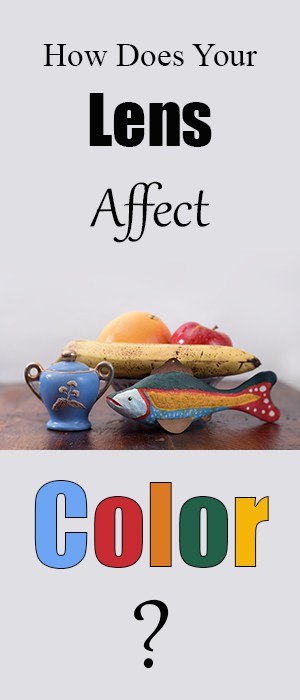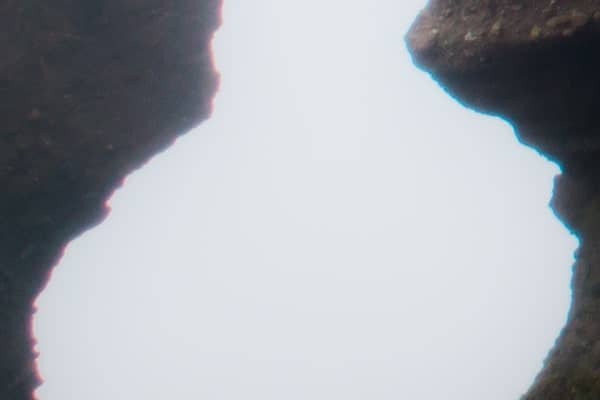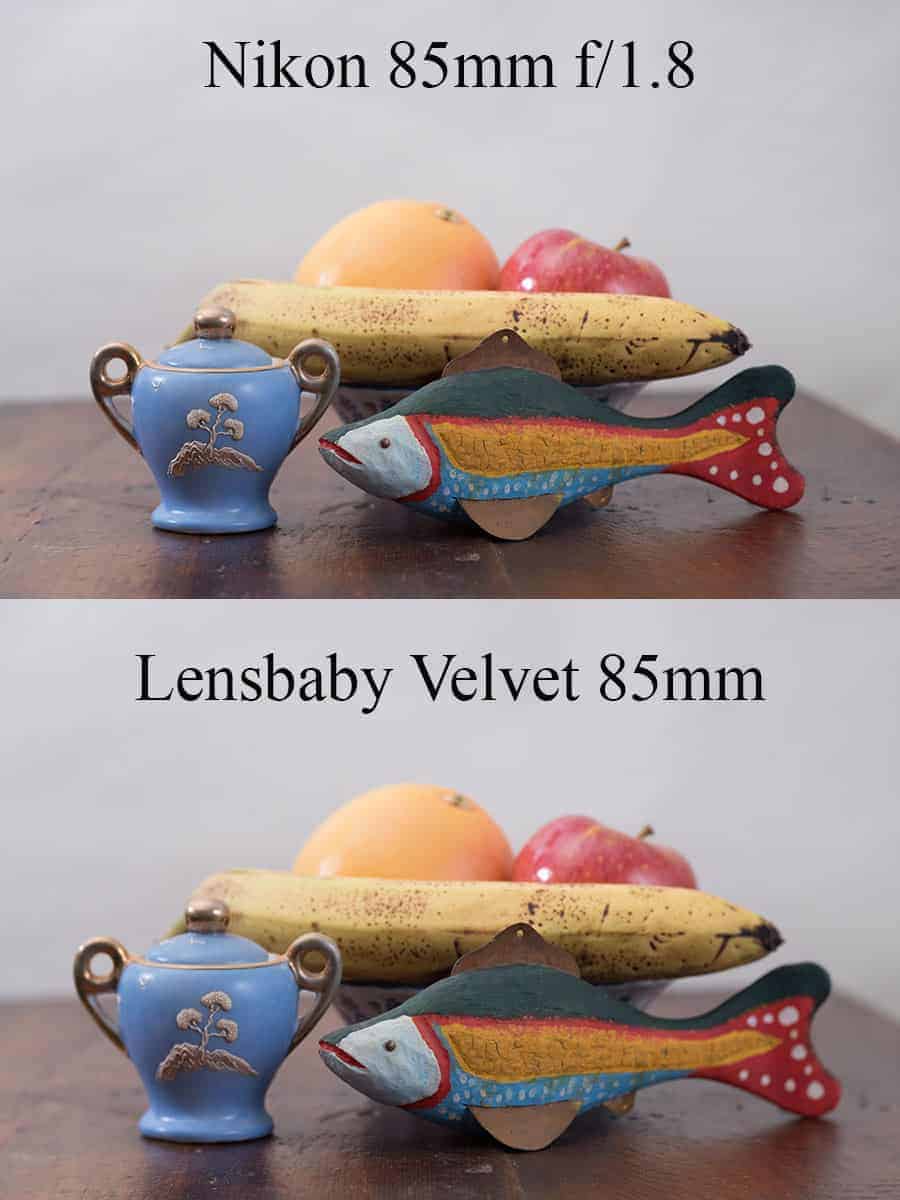
Have you ever noticed that lens descriptions sometimes refer to the ability to “render color”? I have, and it raised some questions. Isn't a lens made of glass, and as such, isn't it clear? How does your lens affect color in photos? Why? Do different lenses actually render color differently? Do more expensive lenses do a better job? Clearly, I had some research and testing to do!
Fun Fact!
The first thing I learned, as I set about researching this article was that the word lens is derived from lentil. That's right because the curved shape apparently reminded someone of the legume. I would have thought it was so called after the lens in your eye…but I guess that is named after the lentil, as well. It seems so random! Also, I don't care for lentils.
Some Very Basic Science
The glass inside your lens is not flat, like a window, but curved (like a lentil). Some of the glass is convex and some is concave. This is what allows the lens to focus on things that are very far away, or magnify things that are very small. If you think of a flashlight, that you can twist to either focus the beam of light down to a very narrow point or widen it for a diffused light covering a larger area, the principle is very similar. Refraction.
If your lens had only one piece of curved glass in it, then the resulting image would suffer from distortion. For example, the yellow flower in the photo below is distorted by the roundness of the water droplet. In an effort to combat this distortion, lenses are constructed with multiple pieces of curved glass. Some are convex, some are concave, each serves some purpose in compensating for the distortion caused by the others. This is what they mean when the lens manufacturers refer to “elements” (pieces of curved glass) and “groups” (when more than one element is grouped together). All of them are working together to focus the image onto your sensor with as little distortion as possible. That's about as technical as I get. For more information on lens elements, see the article here.

Flare

Now that light is passing through several layers of glass, bending and diffracting every time, a lot can happen. As a rule, zoom lenses tend to need more elements than prime lenses do, and that can lead to poorer color rendition. It can also lead to poorer sharpness, which is why prime lenses are often considered superior. More layers of glass also mean more places for light to bounce around, creating flare, which can negatively impact both color and contrast. Color saturation is closely linked with contrast, which anyone who has ever increased the contrast in a photo will have noticed. Flare is an especially common problem in wide angle lenses. High-quality lenses have coatings that help reduce flare, and using your lens hood will also help. Every now and then, some flare is going to sneak in, especially when shooting into the sun. Although it can be used to effect at times, it does create a hazy effect, robbing the photo of saturation.
Chromatic Aberration
Low-quality lenses often suffer from chromatic aberration or fringing. Chromatic Aberration occurs when the lens is unable to focus all of the different wavelengths of color onto the same focal plane. The result is a glowing halo, usually green or purple, and seen especially around areas of high contrast. There is an obvious problem in rendering colors correctly when they are not all in focus on the same plane, but that's not all. The process of removing the chromatic aberration can often result in an overall desaturation of those colors in the entire image. Kit lenses are frequent offenders.

Noise
Noise can wreak havoc on color and saturation. While the lens itself does not affect noise, higher ISO's become necessary when using lenses with smaller maximum apertures. When used in low light situations, a more affordable, higher f/stop number lens can impact the color in that way.
Color Casts
Different lenses undeniably display different color casts, most likely as a result of the various coatings on the lens. Some color casts may be more appealing than others. In my own testing, I found my Nikon 24-70mm f/2.8 to be a little bit warmer than some of the other lenses in the comparison, and I personally found that to be preferable. Color casts were a bigger issue in the film days than they are in the digital age, but they are still a problem in filmmaking. When filming video for movies or television, multiple cameras are used concurrently. The footages from those different angles and focal lengths are all edited together into the final scene. If colors were inconsistent when flipping between those views, it would be a distraction. For that reason, high-end cinematography lenses come in color matched sets and are accordingly priced in the tens and hundreds of thousands.
Testing
Not one to blindly believe what I'm told, I had to perform my own testing. In a manner that was, frankly typical for me, I left it until a rainy day to do the photos. Instead of a colorful outdoor scene, I had to get creative with the tchotchkes in my house. (Items were selected for variety in color, not for beauty). The advantage to this method is that I had total control over the lighting and there was no chance of it changing while I switched between lenses. All photos were taken with the camera on a tripod, at f/5.6, 1/20th second and white balance set manually in the camera. I kept ISO at 200, since high ISO can affect color, and used a speedlight, bounced off the ceiling at 1/2 power. All photos are straight out of the camera, with no edits applied. I tried to compare lenses with the same or similar focal lengths.
56-60mm Lenses

My first test compared my Nikon 24-70 f/2.8 at 56mm, the Lensbaby Velvet 56, the Lensbaby Twist 60 and the Russian Helios 44-2 (58mm). These lenses ranged in price from around $50 USD for a used Helios to $1800 for the Nikon lens. As you can see from the image above, there were some differences, beyond the slightly different focal lengths. The Nikon lens was a little bit warmer than the others, which I found appealing and the Helios demonstrated a greenish tinge that I found less so. To my eye, the two Lensbaby lenses are nearly identical in color and are probably the most saturated. The Twist 60 has a noticeable vignette, and the Helios appears the least saturated to me.
The 85mm Test

I took both of these photos using the same settings as for the last test. Interestingly, although they were both at f/5.6, I feel like the Lensbaby Velvet 85 resulted in a slightly brighter photo, which appears more saturated to my eye. It also appears to be slightly more zoomed in, even though it is the same focal length, demonstrating the many discrepancies that can exist between lenses. The Velvet 85 was actually the very lens that got me thinking about this topic. I had noticed that I really liked the saturation of the photos taken with it, even straight out of camera. That is rare for me since I shoot RAW, and the photos are usually a little bland. I'm not necessarily saying that it is optically superior – the Nikon lens is clearly sharper, at the same aperture, but I do find the color rendering very pleasing from this lens.
At The End Of The Day…
So, now I'm a believer. There are subtle differences in color rendition between lenses, but does it matter? Looking at my examples above, I think the answer is “no”, or at least “not really”. The differences I saw under these controlled conditions were subtle and would be easily corrected in post processing. A tiny increase in the vibrance slider here, a tweak of the white balance there and the differences would be imperceptible.
Out in the wild, issues with flare and chromatic aberration become bigger problems, less easily overcome in Lightroom. A low-quality lens can have coatings that fail to reduce haze and flare. Worse still, the coatings themselves can degrade, creating color casts. When it comes to lenses, you do tend to get what you pay for, at least for now. Modern advances and the affordability of manufacturing are closing the gap year by year.

If you have it on auto-whitebalance, shouldn’t the white balances all end up about the same, since the camera should be looking through the lens and balancing the whitepoint according to what it sees (which should also be what is captured when the picture is taken)?
Is the issue just variability in the auto-whitebalance feature of your camera, something with the color cast of the lens pushing it unevenly out of balance (ex, mid-tones being in balance but lighter tones pushed one way and darker tones pushed another), or something with the lens providing a different color cast when stopped down compared to when it was wide open for the metering?
Genuinely curious, because the results above are definitely not what I would expect from a functioning white balance. Any chance of doing some more experimentation with regards to the cast?
On the other hand, saturation and richness across the whole color palette is definitely something I’d expect to be affected by specific lenses, and not made up for in camera. It should be possible, though, to calibrate the lens combination to “re-saturate” to some extent (obviously the desaturated colors coming through will lose data and you can’t regain that), although perhaps I am thinking of it too simply as a color-mapping process.